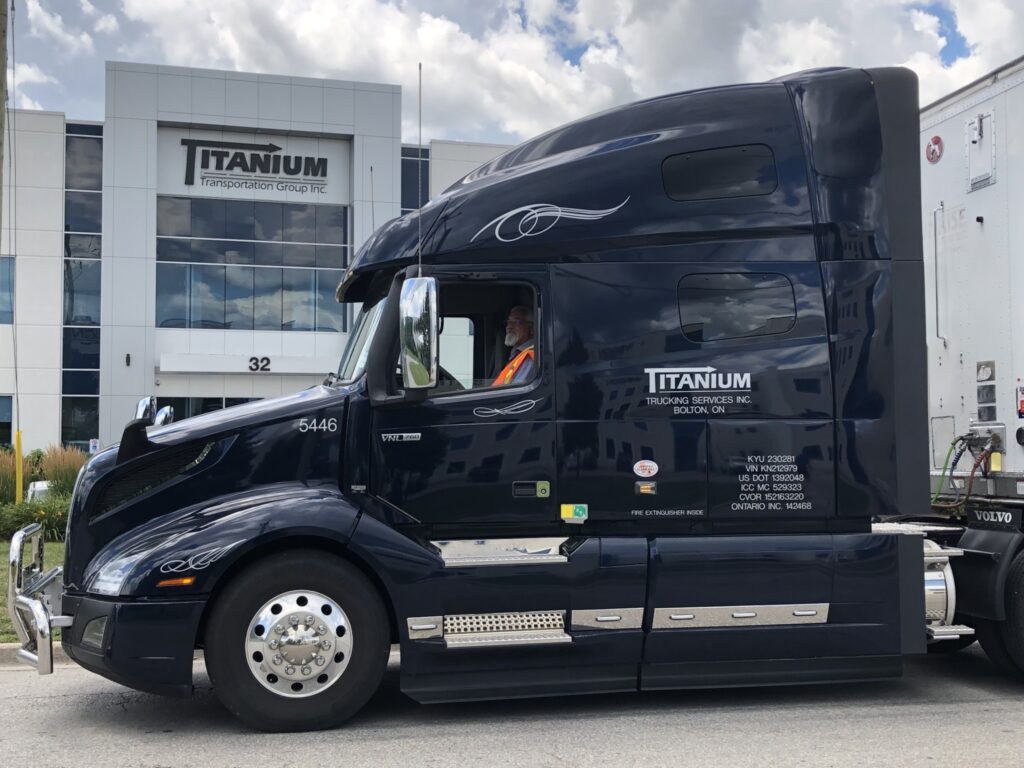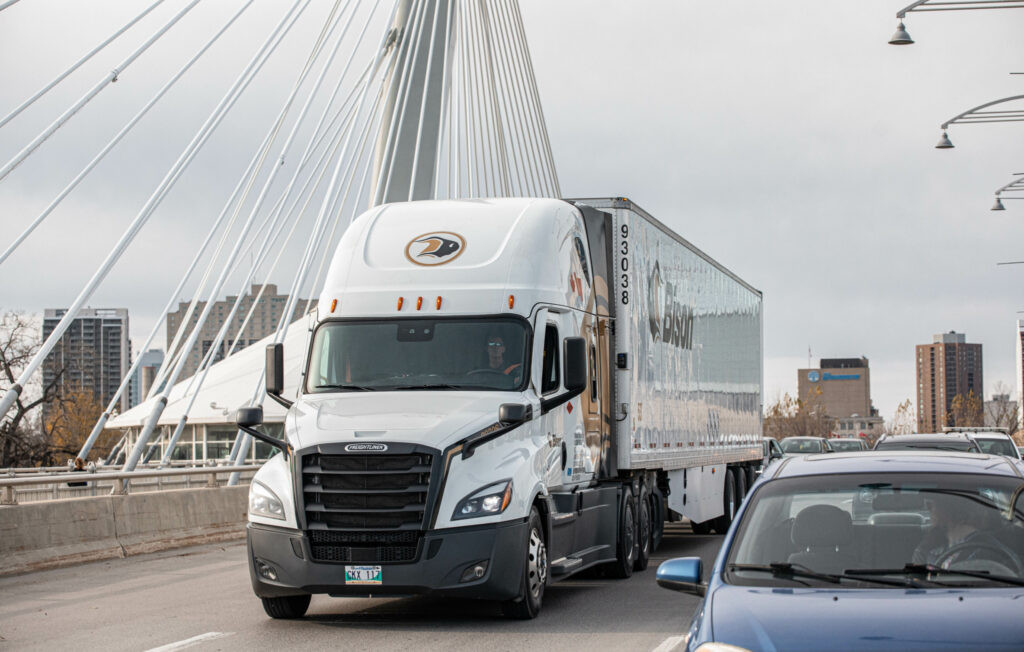Truckers and Tech: When off-the-shelf platforms won’t suffice
In the trucking industry, there is no one software or hardware offering that can do it all for everyone, as there are far too many complexities involved.
GP Transco, which operates in both Canada and the U.S., summed up the current situation late last year in a post on LinkedIn: “In the dynamic world of logistics and transportation, the role of modern technology cannot be overstated,” the company wrote.
“Whether it’s the deployment of state-of-the-art trucks and trailers, a cutting-edge Transportation Management System (TMS), or a modern IT infrastructure, technological advancements are revolutionizing the trucking industry and shaping its future.”
With that in mind, TruckNews.com reached out to three Canadian trucking operations that have invested in not only IT hardware and software, but computer programmers and other technical specialists that are creating in-house magic for each of their respective organizations:

Polaris Transportation Group
Family-owned and operated Polaris has aggressively embraced technology advances and the firm is fortunate in having a president in Dave Cox who saw the importance of investing heavily in digital. It also helped that on his board was Dave Brajkovich, an IT executive, who in 2018 left his position as senior director of enterprise business solutions with an investment management firm to become the firm’s chief technology officer.
Cox, recalls Brajkovich, was “sick and tired of people only utilizing small pieces of technology” and he recognized that without technology, because it was advancing so fast, his business was in jeopardy.

“He embarked on a very aggressive campaign. And I would say, over the last six years, we have advanced quite prominently. I would not say bleeding edge — but certainly cutting edge — by introducing a lot of tools that in transportation, only the big guys had available.”
A key move occurred in 2019 when Polaris created a software development organization called Northstar Digital Solutions, a digital lab of which Brajkovich is CEO.
“It gives me an advantage, because anything we R&D through our digital lab, we use our asset-based company to basically take part in each of the use cases that we build. We do not necessarily assume things; we actually create effective solutions that will either work or not – will fail fast or succeed quickly.”
The Northstar/Polaris relationship means that developers are always looking to advance the operational side of the business. An example of that is a system developed internally that actually conducts processes via a combination of machine learning and robotic algorithms.
“A use case we did was customs document processing. That used to take 30 people to do internally and now we have probably about 120 bots, doing it on the back end straight through at an 80% clip. That has taken a lot of hard work and labor and accuracy, away from humans.”
Cox, says Brajkovich, has a theory when it comes to technologies such as machine learning or AI advances: “Basically, take that labor intensive process out and leave the human engineering capabilities to shine. I do not think AI is anywhere close right now to taking people’s jobs away, but it certainly will take the mundane work out of the process.”
Of Polaris’ three main business lines – LTL and cross-border services, 3PL warehouse management and freight forwarding/3PL – Brajkovich points out that through technology advances there is a lot of integration helping to bring them much closer together.
“Enough that our finance team, for example, can see everything that is happening between all systems that are operating, and then also give data information compliance to operational managers that are running the business lines.”

Titanium Transportation Group
Formed in 2002, Bolton, Ont.-based Titanium Transportation Group has come a long way since it operated out of a single room and specialized in brokered loads. Today, with 1,000 power units, 3,300 trailers and 1,300 employees and independent owner-operators, its reach extends across both Canada and the U.S.
For Ted Daniel, who along with his wife Marilyn, founded the firm, technology advances have been critical to the company’s ability to not only grow, but prosper.
The trucking industry, he says is so “hyper-fragmented, you have to think of a way to create some sort of generic digital platform. That’s what over time drove us to do that. We looked at customer needs, employee needs, internal needs regarding functionality and that is how our tech department evolved.”
The company has created a hybrid approach to internal development in the sense it has installed TMW.Suite transportation management software from Trimble. “We use it more as a platform,” says Daniel. “So, I have SQL programmers.
“But I also have programmers that go beyond that as well and take the SQL data, and then create portals for whether it is a carrier, customer, or employees or drivers and so on. The databases are one aspect. But then there are also the customizations, which help us connect to customers, connect to vendors connect to carriers, connect employees, drivers, etc. It’s connected navigation – connectivity to different parts of the business.”
“Anybody ignoring AI today does not understand where the world is going.”
Ted Daniel, Titanium Transportation
The hybrid approach has led to the development of an assortment of advanced offerings that include customer and carrier portals for load tracking and management, digital equipment tracking services, and business intelligence reporting to optimize business operations.
It also helps that he studied computer science prior to launching the business, which makes him a self-confessed advocate of all things technical.
With 50% of the company being asset light and 50% asset heavy, there are different needs, Daniel says. “We have built custom portals for our customers, custom portals for our carriers, for our employees, for our drivers.”
He is also not ignoring the burgeoning AI revolution that promises to change how every industry operates in some way or form.
“Anybody ignoring AI today does not understand where the world is going,” says Daniel, who has a programmer currently exploring possibilities for Titanium. “Is it going to all of a sudden wipe out a bunch of jobs? I do not think so. I do not think it’s going to wipe out any jobs to be honest, but will it make certain elements of certain people’s jobs a little bit more interesting and more efficient? Yes, and some of that bottom end and monotonous stuff is going to go away.”

Bison Transport
Winnipeg-based Bison, with an asset-based fleet of 3,000 tractors and 10,000 trailers and containers operating across North America, has invested heavily in technology, but using what Brad Gerrard, its chief information officer, describes as a “balanced approach” to technology selection.
The reason for that has to do with the type of services Bison provides and they range from its Less-than-Truckload (LTL) division to warehousing at secure facilities in key Canadian and U.S. hubs.
There are, says Gerrard, situations “where our business and user requirements are unique, so it makes investing in developing in-house applications the right choice. In other situations, there are some well established products and interesting ideas in the innovation pipeline that can complement our technology stack and address Bisons solution needs, and we are absolutely open to both options.
“It is a case of knowing ourselves, knowing our needs, and understanding what the market can offer, allows us to get to a balanced decision-making process between build versus buy.”
Bison’s technology team has developed a number of apps over the years including i-Tools, which the company describes as a “set of on-demand online tools which allow customers to keep track of their loads, receive paperwork and notifications … built using the latest of internet technologies, lets you get at your information regardless of your location.”
Another is Herd2Go, an app for drivers that allows them to instantaneously get in touch with dispatch via their mobile phone and according to Bison, give them more clarity and accessibility, with less downtime.
“There are a number of applications we have built over the years. And there are a number that we build, continue to maintain and adapt for Bison’s purposes,” says Gerrard.
Asked about his thoughts on AI, he says what interests him is that “it is becoming a lot more accessible, and more capable and a lot easier to leverage.”
A number of years ago, he adds, “there was a lot of a lot of work involved with data curation and training, modern AI’s have, have really closed that innovation the adoption curve. We’re testing some use cases and have plans for more – it is very much a part of our tech strategy. The key thing is to make sure that it is going to have the desired impact for users and it operates reliably.”
Accuracy , privacy and security are also very important, he says. When it comes to in-house development, the key, says Gerrard, is having skilled programmers that with the right set of technologies will allow them to “experiment with different ideas and assembling processes that work for Bison.”
Have your say
This is a moderated forum. Comments will no longer be published unless they are accompanied by a first and last name and a verifiable email address. (Today's Trucking will not publish or share the email address.) Profane language and content deemed to be libelous, racist, or threatening in nature will not be published under any circumstances.